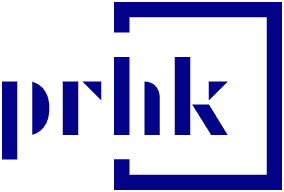PRHK Viewpoints: Moving “New Humans” in Web 3.0: Opportunities for Brands in the Metaverse
By now you should be familiar with the term “The Metaverse,” or at least have heard it in references to gaming (think Fortnite) or companies (think Meta, a.k.a. the company formerly known as Facebook). If you do not know what the Metaverse is, it is easiest described as a real-time virtual dimension that sits on top of physical reality and incorporates new technology and means of communications including augmented reality, virtual reality, 3D holographic avatars and video.
There are currently two big discussions regarding the Metaverse – the first is about how immersive technologies will make it a connected, persistent, limitless, and user-defined virtual world, and the second is about how it will sit within or outside of Web 3.0, the next evolution in digital connectivity – a successor state to today’s mobile internet. There is a possibility that these technologies and Web 3.0 may not come together as expected. No one can say for sure.
For marketing and communications practitioners, the Metaverse will change a user’s digital experience of “time” and “space” forever, providing limitless opportunities for engaging with audiences. In fact, it will change everything about how we as “New Humans” will interact with brands online. And that is a very big deal.
Here are three opportunities to leverage this new platform for ourselves:
- Co-create with “New Humans”
With brands connecting directly with customers in the Metaverse, new types of meaningful relationships with consumers will evolve, even with their avatars. This is where the concept of Business-to-Avatar or Direct-to-Avatar will come in to play. Development methods in gaming will be adopted by more industries due to the new engagement possibility in the Metaverse – just like playtesting, where gamers give feedback on experiences prior to a game launching to the wider public.
The engagement possibilities in Web 3.0 promise to introduce a new level of data quality and trust because consumers have to opt-in before any data is shared, making it inherently more trustworthy. This, in turn, improves marketing communications efforts across the board by providing better insights into consumer behavior. If development goes well, consumers gain privacy and ownership of their online data while also earning rewards for sharing it with brands they care about.
- Build or join communities
Although a change in brands’ approach to consumers may take a while to play out due to varying levels of customization across industries, the need for a brand to have a community mindset is essential. Brands will need to build communities around their products where people can learn from each other and make informed decisions together. This will give them more value than just buying a product or service from a brand ever could.
While brands engage with existing communities, it is important that they do not show up in ways that alienate the people already there. This can be avoided by partnering with a Roblox developer community or Fortnite creators to help the brand understand a certain platform, once they have identified that this is the right community to join. User-generated content is key, and community members will become an integral aspect of campaign execution.
- Leverage the platform’s experimental nature
When we visit apps and websites, we do not truly get a sense of having gone anywhere – the experience is one-dimensional. In the Metaverse, “New Humans” can visit a space virtually – with its own architectural and spatial logic – and these spaces can mirror the real world in that they have no “end.” When you leave, the space continues to evolve as new users jump in. Today’s Metaverse prototypes give brands the opportunity to create a space in real time, to enable users to experience something unique and in the moment.
Personal habits, preferences, beliefs, and perceptions not only extend into the digital realm but are altered and amplified across the multiple platforms in which they are active. Many brands are now considering using their own “New Humans” to provide their stakeholders with engaging experiences in both 2D digital and 3D spaces and hope to interact with their audience in the Metaverse in ways not possible on traditional platforms. It could be an avatar designed for a product or service, or engaging concept for a business, or making abstract ideas or concepts relatable by giving them a character and human-like qualities.
While there are so many opportunities, there is an important consideration to keep in mind: With new technologies emerging to support hyper-realistic digital identities, the complex process of creating high-quality, realistic, and accessible digital individuals also means that there is a corresponding cost implication. Heavier bandwidth and hardware resources will cost more, an important consideration when it comes to stakeholder experience.
We are a long way from seeing the full potential of the Metaverse, but we are now seeing a glimpse of what may come. It will be critical to use this phase of acute experimentation as an opportunity to study how the identity and behavior of these “New Humans” evolves in the Metaverse. Stay agile and leverage approaches like “story-living” which allow for trial and error. This way, brands can engage with “New Humans” authentically within the Metaverse and provide them with spaces to build relationships with others.
This piece was written by Joe Peng, Chief Digital Officer, BCW Asia-Pacific. PRHK Viewpoints is an article series contributed by members of PRHK, Hong Kong’s PR & communications association.

